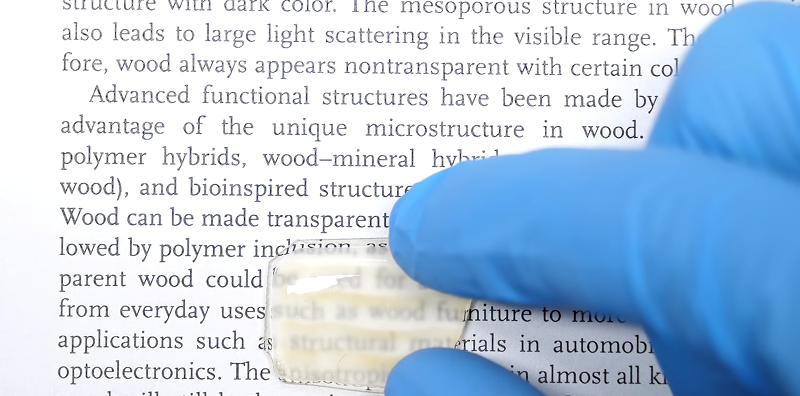We’ve talked about transparent wood before. However, the process can be difficult to get just right. [NileRed] recently posted a video with very detailed instructions on how he’s doing it. Aside from the dangerous way he uses a table saw — something he realized after he watched the video — it is some great information.
This isn’t some hand-waving explanation. For nearly 36 minutes, you get an actual demonstration of the steps along with some explanations about why it works and why certain steps are done in a particular way.
Apparently, the chemical treatment — which is similar to how wood is prepared to make paper — removes some of the wood’s components leaving a network of tubes made of cellulose. He actually cut wood with and against the grain to compare how the process worked differently.
Cutting across the grain provides a lot of empty space to transmit light and the video explains how removing part of the wood leaves only these cellulose tubes. Once the wood is converted to cellulose tubes, the wood will be weak and subject to drying out. That’s when you add epoxy, although you also need a vacuum to do this properly.
The initial test made more translucent wood, but not particularly so. Using a drying step and adding more epoxy provided a more translucent result. However, the best results came from using a thinner piece of wood and better vacuum equipment. The results still were not perfect, though.
While the results were not as good as the original paper’s there is a lot more detail to help you try to do even better. If you do try, you should also check out [blorgggg’s] Hackaday.io project. His results are a bit more brown, although he also shows how you can start with paper instead of wood and get some interesting results.
















It’s an interesting development, but calling it ‘transparent wood’ is kinda like calling a PCB ‘conductive cotton mesh’. It neglects an important detail or two.
The part that’s actually transparent is the epoxy that replaces the wood’s natural lignins. It’s an interesting idea, and the material might become a useful composite, but that particular name misses the point IMO.
I totally agree. I thought exactly the same when I stumbled over it the first time.
The new thing shares not much with wood in most aspects. I think bendable wood (aka paper) has more in common with this stuff. But it is a interesting stuff.
What the process leaves is like glass reinforced plastic, without the plastic.
Or it’s like fiberglass, with the ghost of wood replacing the glass cloth.
Cellophane is also transparent wood ;)
Shoutout for glassine, which this roughly is
Transparent aluminum is much more useful.
Only for transferring humpback whales. (c:
“A keyboard. How quaint”
Ave’s video is actually better… he fails, and shares why he believes he failed. His failure teaches more than NileRed’s success.
I’d just like to amplify the mention of table saw safety.
Use a push stick to feed the work into the blade.
Use a featherboard to keep the work against the fence, ahead of the blade so as not to pinch the kerf.
Or, use something like the Micro Jig Grr-ripper (https://www.microjig.com/).